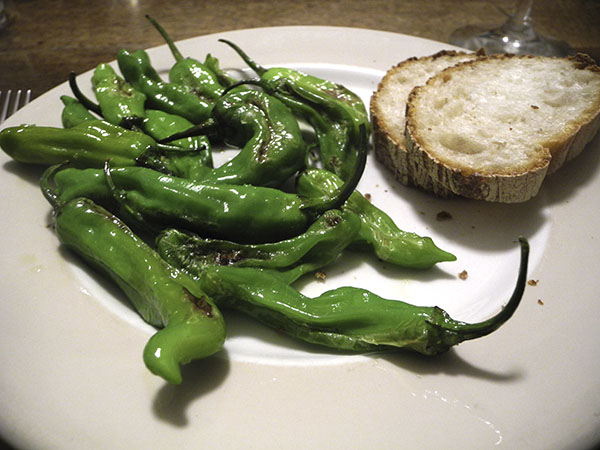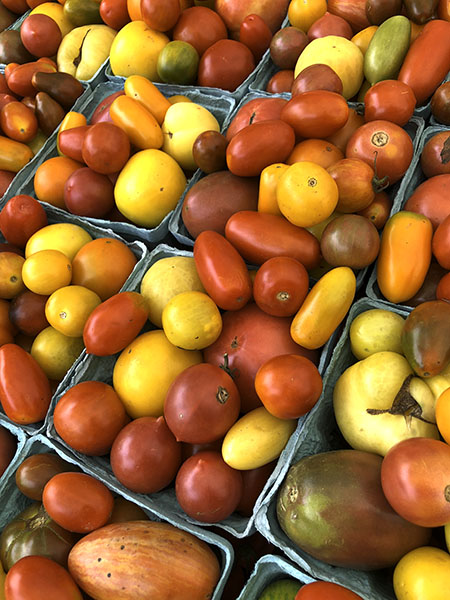
We’ve been big fans of pimientos de padron for more than a decade, later including Shishito peppers, their east Asian cousins, in the same category.
The excellent Pollock is a very different thing, and in its case our modest fan club only goes back about 18 months, but we’re as fond of it as we are of the peppers. Curiously, the American general public’s awareness of the beauties of our genus pollachius is today roughly at the same level as the peppers were to us, and, I would say, to many others, when we first tried them in 2007: Most people are something of a state of ignorance about Pollock, mostly because they never hear about it.
I decided that was a respectable excuse for including the two in the same meal.
- a couple handful of Shishito peppers from Alewiife Farm, washed, drained, dried, then sautéed over medium high heat in a broad cast iron pan for a few minutes, stirring, then salted and served on plates, more, Maldon salt added
- slices of a sesame baguette from Bread Alone Bakery (they’ve decided to put the sesame inside, apparently to reduce defections of the seeds)
The pollock showed up for the main course.

- two 8-ounce white-fleshed pollock filets from American Seafood Company, rinsed, dried, halved, and seasoned on both sides with sea salt and freshly-ground black pepper, placed skin side down inside a buttered oval tin-lined copper gratin pan, spread with a mixture of softened unsalted Organic Valley ‘Cultured Pasture Butter’ that had been mixed with zest from most of an organic Whole Foods Market lemon, a little chopped, almost mature Rocambole garlic from Keith’s Farm, slices of a section of one young red onion (something like a red scallion) from Berried Treasures Farm, a bit of a finely-chopped aji dulce pepper (with a mild, smoky flavor, and sweet, not hot) from Eckerton Hill Farm, the fish baked for about 15-17 minutes at 350º, removed to 2 plates, the little bit of cooking juices that had accumulated poured over the top, and a teaspoon or so of Sicilian salted capers, which had first been rinsed, drained, dried and heated briefly inside a small antique enameled cast iron porringer in a bit of olive oil, scattered while still warm on top of the fillets, along with the oil in which they had been heated, the pollock finished with a garnish of what looks in the image like green fireworks ‘brocades’, but was actually only sprays of dill flower buds from Willow Wisp Farm

- something of a mélange of heirloom (and other?) tomatoes from Eckerton Hill Farm, some of them sliced, heated in a little olive oil inside a medium high-sided antique copper pot, seasoned with salt and pepper, sprinkled with some extremely pungent basil buds from Windfall Farms
- there were more slices of the same Bread Alone Bakery baguette, to help with enjoying the 2 sauces on the plates
- the wine was a California (Central Coast/Santé Ynez Valley) white, Rick Boyer Santa Ynez Valley Dry White Blend 2017, from Naked Wines
by Rick Boyer - the music was Christoph Willibald, Ritter von Gluck’s 1777 opera, ‘Armide’, Marc Minkowski conducting Les Musiciens du Louvre